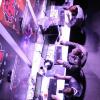The desire to capture the moments of life that happen to a person or the world around him has always existed. This is evidenced by rock paintings and fine arts. In the paintings of artists, accuracy and detail were especially appreciated, the ability to capture an object from a favorable angle, light, convey a color palette, and shadows. Such work sometimes took months of work. It was this desire, as well as the desire to reduce time costs, that became the impetus for the creation of such an art form as photography.
The advent of photography
In the 4th century BC, Aristotle, a famous scientist from Ancient Greece, noticed a curious fact: the light that seeped through a small hole in the window shutter repeated the landscape seen outside the window with shadows on the wall.
Further, in the treatises of scientists from Arab countries, the phrase literally meaning "dark room" begins to be mentioned. It turned out to be a device in the form of a box with a hole in the front, with the help of which it became possible to copy still lifes and landscapes. Later, the box was improved, providing moving halves and a lens, which made it possible to focus on the picture.
Thanks to new features, the pictures became much brighter, and the device was called the "light room", that is, the camera lucina. Such simple technologies allowed us to find out what Arkhangelsk looked like in the middle of the 17th century. With their help, the perspective of the city was taken, which is distinguished by accuracy.
Stages of development of photography
In the 19th century, Joseph Niepce invented a method of photography, which he called heliogravure. Shooting by this method took place in bright sunshine and lasted up to 8 hours. Its essence was as follows:
A metal plate was taken, which was covered with bituminous varnish.
The plate was directly exposed to bright light, which did not dissolve the varnish. But this process was heterogeneous and depended on the strength of the illumination in each of the sections.
Then poisoned with acid.

As a result of all the manipulations, a relief, engraved picture appeared on the plate. The next significant stage in the development of photography was the daguerreotype. The method got its name from the name of its inventor, Louis Jacques Mande Daguerre, who was able to get an image on a silver plate treated with iodine vapor.
The next method was calotype, invented by Henry Talbot. The advantage of the method was the ability to make copies of one image, which, in turn, was reproduced on paper impregnated with silver salt.
The first acquaintance with the art of photography in Russia
The history of Russian photography has been going on for more than a century and a half. And this story is full of different events and interesting facts. Thanks to the people who discovered the art of photography for our country, we can see Russia through the prism of time as it was many years ago.
The history of photography in Russia begins in 1839. It was then that a member of the Academy of Sciences of Russia, I. Hamel, went to Great Britain, where he got acquainted with the calotype method, having studied it in detail. Then he sent a detailed description. Thus, the first photographs made by the calotype method were obtained, which are still stored in the Academy of Sciences in the amount of 12 pieces. The photographs bear the signature of the inventor of the method, Talbot.

After that, Hamel meets Daguerre in France, under whose guidance he takes several pictures with his own hands. In September 1841, the Academy of Sciences received a letter from Hamel, in which, according to him, was the first photograph taken from nature. A photograph taken in Paris shows a female figure.
After that, photography in Russia began to gain momentum, rapidly developing. Between the 19th and 20th centuries, photographers from Russia began to take part in international photo exhibitions and salons on a general basis, where they received prestigious awards and prizes, and had membership in the relevant communities.
Talbot's way
The history of photography in Russia was developed thanks to people who were keenly interested in a new kind of art. So was Julius Fedorovich Fritzsche, a famous Russian botanist and chemist. He was the first to master the Talbot method, which consisted in obtaining a negative on light-sensitive paper and then printing it on a sheet treated with silver salts and developing in sunlight.

Fritzsche took the first calotype photographs of plant leaves, after which he appeared before the Academy of Sciences in St. Petersburg in May 1839 with a report. In it, he reported that he found the calotype method suitable for capturing flat objects. For example, the method is suitable for taking photographs of original plants with the accuracy required by a botanist.
Contribution by J. Fritzsche
Thanks to Fritzsche, the history of photography in Russia stepped a little further: he proposed replacing sodium hyposulfate, which Talbot used to develop the picture, with ammonia, which noticeably modernized the calotype, improving image quality. Julius Fedorovich was also the first in the country and one of the first in the world to conduct research work on photography and photographic art.
Alexey Grekov and the "art booth"
The history of photography in Russia continued, and the next contribution to its development was made by Alexei Grekov. A Moscow inventor and engraver, he was the first Russian master of photography to master both calotype and daguerreotype. And if you ask a question about what the first cameras were in Russia, then it is Grekov's invention, the "art room", that can be considered as such.

The first camera, created by him in 1840, made it possible to take high-quality portrait photographs with good sharpness, which many photographers who tried to achieve this could not. Grekov came up with a chair with special comfortable pads that supported the head of the person being photographed, allowing him not to get tired during a long sitting and to maintain a motionless position. And a person in a chair had to be motionless for a long time: 23 minutes in the bright sun, and on a cloudy day - all 45.
The master of photography Grekov is considered to be the first portrait photographer in Russia. To achieve excellent portrait photographs, he was also helped by the photographic device he invented, consisting of a wooden camera into which light did not penetrate. But at the same time, the boxes could slide out one from the other and return to their place. At the front of the outer box, he attached a lens, which was a lens. The inner box contained a light sensitive plate. By changing the distance between the boxes, that is, by moving them one from the other or vice versa, it was possible to achieve the necessary sharpness of the image.
Contribution of Sergey Levitsky
The next person, thanks to whom the history of photography in Russia continued to develop rapidly, was Sergei Levitsky. Daguerreotypes of Pyatigorsk and Kislovodsk, made by him in the Caucasus, appeared in the history of Russian photography. As well as the gold medal of an art exhibition held in Paris, where he sent pictures to participate in the competition.
Sergey Levitsky was in the forefront of photographers who suggested changing the decorative background for filming. They also decided to retouch portrait photographs and their negatives in order to reduce or completely remove technical flaws, if any.

Levitsky leaves for Italy in 1845, deciding to improve the level of knowledge and skills in the field of daguerreotype. He takes pictures of Rome, as well as portrait photos of Russian artists who lived there. And in 1847 he comes up with a photographic apparatus with folding fur, using the fur from the accordion for this. The innovation allowed the camera to become more mobile, which was largely reflected in the expansion of photography opportunities.
Sergei Levitsky returned to Russia as a professional photographer, having opened his own daguerreotype workshop "Light Painting" in St. Petersburg. With her, he also opens a photo studio with a rich collection of photographic portraits of Russian artists, writers and public figures. He does not give up studying the art of photography, continuing to empirically study the use of electric light and its combination with solar and their influence on photographs.
Russian trace in photography
Artists, masters of photography, inventors and scientists from Russia have made a great contribution to the history and development of photography. So, among the creators of new types of cameras, such Russian surnames as Sreznevsky, Ezuchevsky, Karpov, Kurdyumov are known.
Even Dmitri Ivanovich Mendeleev took an active part, dealing with theoretical and practical problems of making photographs. And together with Sreznevsky, they stood at the origins of the creation of the photographic department in the Russian Technical Society.

The successes of Andrey Denyer, a bright master of Russian photography, who can be put on the same level with Levitsky, are widely known. He was the creator of the first photo album with portraits of famous scientists, doctors, travelers, writers, artists. And the photographer A. Karelin became known throughout Europe and entered the history of photography as the founder of the genre of everyday photography.
Development of photography in Russia
Interest in photography at the end of the 19th century increased not only among specialists, but also among the common population. And in 1887, the "Photographic Bulletin" was published, a magazine in which information was collected on recipes, chemical compositions, photo processing methods, and theoretical data.
But before the revolution in Russia, the opportunity to engage in artistic photography was available only to a small number of people, since almost none of the inventors of the camera had the opportunity to produce them on an industrial scale.

In 1919, V. I. Lenin issued a decree on the transfer of the photographic industry under the control of the People's Commissariat of Education, and in 1929 the creation of light-sensitive photographic materials began, which later became available to everyone. And already in 1931, the first domestic camera "Photokor" appeared.
The role of Russian masters, photo artists, inventors in the development of photographic art is great and occupies a worthy place in the world history of photography.
Despite the abundance of photographers, often self-made, few can tell in detail about the history of photographs. That is what we will do today. After reading the article, you will learn: what is a camera obscura, what material became the basis for the first photograph, and how instant photography appeared.
Where did it all begin?
People have known about the chemical properties of sunlight for a very long time. Even in ancient times, any person could say that the sun's rays make skin color darker, guessed about the effect of light on the taste of beer and the sparkling of precious stones. History has more than a thousand years of observations of the behavior of certain objects under the influence of ultraviolet radiation (this is the type of radiation characteristic of the sun).
The first analogue of photography began to be truly used as early as the 10th century AD.
This application consisted in the so-called camera obscura. It represents a completely dark room, one of the walls of which had a round hole that transmits light. Thanks to him, a projection of the image appeared on the opposite wall, which the artists of that time “finalized” and received beautiful drawings.
The image on the walls was upside down, but that didn't make it any less beautiful. This phenomenon was discovered by an Arab scientist from Basra named Alhazen. For a long time he was engaged in observing light rays, and the phenomenon of the camera obscura was first noticed by him on the darkened white wall of his tent. The scientist used it to observe the dimming of the sun: even then they understood that it was very dangerous to look at the sun directly.

First photo: background and successful attempts.
The main premise is the proof by Johann Heinrich Schultz in 1725 that it is light, and not heat, that causes silver salt to turn dark. He did this by accident: trying to create a luminous substance, he mixed chalk with nitric acid, and with a small amount of dissolved silver. He noticed that under the influence of sunlight the white solution darkens.
This prompted the scientist to another experiment: he tried to get an image of letters and numbers by cutting them out on paper and applying them to the illuminated side of the vessel. He received the image, but he did not even have thoughts about saving it. Based on the work of Schultz, the scientist Grotgus found that the absorption and emission of light occurs under the influence of temperature.
Later, in 1822, the world's first image was obtained, more or less familiar to modern man. It was received by Joseph Nsefort Niépce, but the frame he received was not preserved properly. Because of this, he continued to work with great zeal and received in 1826, a full-fledged frame, called "View from the Window". It was he who went down in history as the first full-fledged photograph, although it was still far from the quality we were used to.

The use of metals is a significant simplification of the process.
A few years later, in 1839, another Frenchman, Louis-Jacques Daguerre, published a new material for taking photographs: copper plates coated with silver. After that, the plate was doused with iodine vapor, which created a layer of light-sensitive silver iodide. It was he who was the key to future photography.
After processing, the layer was subjected to a 30-minute exposure in a room illuminated by sunlight. Then the plate was taken to a dark room and treated with mercury vapor, and the frame was fixed with table salt. It is Daguerre who is considered to be the creator of the first more or less high-quality photograph. This method, although it was far from "mere mortals", was already much simpler than the first.
Color photography is a breakthrough of its time.
Many people think that color photography appeared only with the creation of film cameras. This is not true at all. The year of creation of the first color photograph is considered to be 1861, it was then that James Maxwell received the image, later called the “Tartan Ribbon”. For creation, the method of three-color photography or the color separation method was used, whichever one likes more.
To obtain this frame, three cameras were used, each of which was equipped with a special filter that makes up the primary colors: red, green and blue. As a result, three images were obtained, which were combined into one, but such a process could not be called simple and fast. To simplify it, intensive research was carried out on photosensitive materials.

The first step towards simplification was the identification of sensitizers. They were discovered by Hermann Vogel, a scientist from Germany. After some time, he managed to get a layer sensitive to the green color spectrum. Later, his student Adolf Miethe created sensitizers sensitive to the three primary colors: red, green and blue. He demonstrated his discovery in 1902 at a Berlin scientific conference along with the first color projector.
One of the first photochemists in Russia, Sergei Prokudin-Gorsky, a student of Mitya, developed a sensitizer more sensitive to the red-orange spectrum, which allowed him to surpass his teacher. He also managed to reduce the shutter speed, managed to make the pictures more massive, that is, he created all the possibilities for replicating photographs. Based on the inventions of these scientists, special photographic plates were created, which, despite their shortcomings, were in high demand among ordinary consumers.
Snapshot is another step towards speeding up the process.
In general, the year of the appearance of this type of photography is considered to be 1923, when a patent was registered for the creation of an “instant camera”. There was little use for such a device, the combination of a camera and a photo lab was extremely cumbersome and did not greatly reduce the time it takes to get a frame. Understanding the problem came a little later. It consisted in the inconvenience of the process of obtaining the finished negative.
It was in the 1930s that complex light-sensitive elements first appeared, which made it possible to obtain a ready-made positive. Agfa was involved in their development in the first couple, and the guys from Polaroid were engaged in them en masse. The first cameras of the company made it possible to take instant photographs immediately after taking a picture.
A little later, similar ideas were tried to be implemented in the USSR. Photo sets "Moment", "Photon" were created here, but they did not find popularity. The main reason is the lack of unique light-sensitive films to obtain a positive. It was the principle laid down by these devices that became one of the key and most popular at the end of the 20th - beginning of the 21st century, especially in Europe.
Digital photography is a leap forward in the development of the industry.
This type of photography really originated quite recently - in 1981. The founders can be safely considered the Japanese: Sony showed the first device in which the matrix replaced the film. Everyone knows how a digital camera differs from a film camera, right? Yes, it could not be called a high-quality digital camera in the modern sense, but the first step was obvious.

In the future, a similar concept was developed by many companies, but the first digital device, as we are used to seeing it, was created by Kodak. The serial production of the camera began in 1990, and it almost immediately became super popular.
In 1991, Kodak, together with Nikon, released the Kodak DSC100 professional digital SLR camera based on the Nikon F3 camera. This device weighed 5 kilograms.
It is worth noting that with the advent of digital technologies, the scope of photography has become more extensive.
Modern cameras, as a rule, are divided into several categories: professional, amateur and mobile. In general, they differ from each other only in the size of the matrix, optics and processing algorithms. Due to the small number of differences, the line between amateur and mobile cameras is gradually blurring.
Application of photography
Back in the middle of the last century, it was hard to imagine that clear images in newspapers and magazines would become a mandatory attribute. The boom in photography was especially pronounced with the advent of digital cameras. Yes, many will say that film cameras were better and more popular, but it was digital technology that made it possible to save the photographic industry from such problems as running out of film or overlaying frames on top of each other.
Moreover, modern photography is undergoing extremely interesting changes. If earlier, for example, to get a photo in your passport, you had to stand in a long queue, take a picture and wait a few more days before it was printed, now it’s enough just to take a picture of yourself on a white background with certain requirements on your phone and print the pictures on special paper.
Artistic photography has also come a long way. Previously, it was difficult to get a highly detailed frame of a mountain landscape, it was difficult to crop unnecessary elements or make high-quality photo processing. Now even mobile photographers are getting great shots, ready to compete with pocket digital cameras without any problems. Of course, smartphones cannot compete with full-fledged cameras, such as Canon 5D, but this is a topic for a separate discussion.
Digital SLR for beginners 2.0- for connoisseurs of Nikon.

My first MIRROR— for connoisseurs of CANON.

So, dear reader, now you know a little more about the history of photography. I hope this material will be useful to you. If so, why not subscribe to the blog update and tell your friends about it? Moreover, you will find a lot of interesting materials that will allow you to become more literate in matters of photography. Good luck and thank you for your attention.
Sincerely yours, Timur Mustaev.
As usual, it is believed that photography was invented by one person. Of course it isn't. Photography was not invented by one person, but by a whole galaxy of enthusiastic people. The history of photography goes back to time immemorial, from the camera obscura...
And it was like this: the incredible turbulence of photographic life began in 1839, when Daguerre published his important message about the invention of photography. In the same 1839, Hippolyte Bayard demonstrated positive prints in Paris, and John Herschel read at the Royal Society (Academy of Sciences in England) his report on the method he invented for fixing photographs using soda hyposulfite, the same hyposulfite that is now used in every darkroom . And before that, for more than 100 years, photography made its way to the light ...
But long before these events, the first person to prove that light, and not heat makes silver salt dark, was Johann Heinrich Schulze (1687-1744), a physicist, professor at the University of Gaul in Germany. In 1725, while trying to prepare a luminous substance, he accidentally (accidentally!) mixed chalk with nitric acid, which contained some dissolved silver. He noticed that when sunlight fell on a white mixture, it became dark, while the mixture, protected from sunlight, did not change at all. Then he conducted several experiments with letters and figures, which he cut out of paper and put on a bottle of prepared solution - photographic prints were obtained on silver-plated chalk. Professor Schulze published the findings in 1727, but he had no thought of trying to make the images found in this way permanent. He shook the solution in the bottle, and the image disappeared. This experiment, however, gave rise to a whole series of observations, discoveries and inventions in chemistry, which, with the help of a camera obscura, led to the discovery of photography a little more than a century later. And for this he must be thanked.
And yet, where was the beginning of photography? Where is the starting point? The chemical prehistory of photography begins in ancient times. People have always known that human skin darkens from sunlight, opals and amethysts sparkle, the taste of beer deteriorates... The optical history of photography goes back about a thousand years. The very first camera obscura can be called "a room part of which is illuminated by the sun." The tenth-century Arab mathematician and scientist Alhazen of Basra, who wrote about the basic principles of optics and studied the behavior of light, noticed the natural phenomenon of the inverted image. He saw this upside-down image on the white walls of darkened rooms or tents set up on the sunny shores of the Persian Gulf - the image passed through a small round hole in the wall, in the open canopy of the tent or drapery.
The large camera obscura built in Kim by Athanasius Kircher in 1646 is shown without the top and side walls. It was a small mobile room, which was easily carried by the artist to the place where he wanted to paint. The artist climbed into this room through the hatch. On the engraving, he outlines, on the reverse side, an image on transparent paper, which hangs opposite one of the lenses.
Alkhazen used a camera obscura to observe solar eclipses, knowing that it was harmful to look at the sun with the naked eye. The inverted image of the camera obscura is explained simply: the light passes in straight lines through a small hole made in the center. Lines of light reflected from the base of the sunlit landscape enter the opening and are projected in a straight line towards the top of the wall of the darkened room. Similarly, lines of light reflected from the top of the landscape go to the base of the wall, and all the lines respectively pass through the center, forming an inverted image. In the early years of the fifteenth century, artists began to strive to reproduce light in their canvases.
A lively interest in optics in the sixteenth century laid the foundation for the scientific discoveries of the next century. In 1604, Kepler determined the physical and mathematical laws of mirror reflection. In 1609, Galileo invented the compound telescope. In 1611, Johannes Kepler developed a theory of lenses that became reliable scientific tools. Interest in optical phenomena swept all over Europe like a fever. Artists, as well as scientists, have been strongly influenced by these scientific findings. If artists showed scientists how to see the world, now scientists paid them for this service. The visual arts of the sixteenth century, especially in Venice and northern Italy, reflected a great interest in optical phenomena, and in the seventeenth century it became almost universal.

Jan Vermeer. Girl in a red hat. About 1660. Tree. Oil.
Architects, scene painters, sculptors have fallen prey to the love of illusion. As usual, they fell first! The imagination of the artists' vision was boundless. Some of the Dutch—Karel Fabricius, Jan Vermeer, Samuel van Hoogstraten—and the Spaniard Velazquez went even further than the perceived possibilities of the naked eye and drew phenomena that could only be seen with the help of a mirror or lenses. Vermeer's The Girl with the Red Hat, for example, appears to us as if it had been taken by a camera that produces "random circles" around brightly lit places where not every ray in the light is sharply focused. For the artists of the seventeenth, eighteenth, and early nineteenth centuries, the camera obscura became of great practical use, and the size of the camera kept getting smaller.
It became possible to use the camera obscura in nature, and closed chairs and awnings were modified for this purpose in the seventeenth century. In 1620, Kepler, the great astronomer and optical physicist, set up a dark tent in a field, placed a lens in the slit of the tent, and observed the image that appeared on white paper attached to the opposite side of the tent, opposite the lens.
The camera obscura soon became two feet long and less than a foot high (1 foot = 30.8 cm), with a lens on one side and a mirror at the base of the other. The reflex camera obscura was created by Johann Zahn in 1685. His box had the advantage that the mirror was placed inside at a 45 degree angle to the lens and the image was reflected at the top of the box. Here he placed frosted glass covered with tracing paper, and could easily trace the image. Tsang also invented an even smaller reflex camera obscura with a built-in lens. It was very reminiscent of the cameras used by Niépce a hundred and fifty years later. The increased number of middle-class people in the eighteenth century created a demand for moderately priced portraits. Previously, portraits were only the privilege of the rich. The first response to this demand was the creation of "silhouette", a method in which the contours or shadows projected onto paper were simply outlined, and then this paper was cut and pasted. The "facial outline" invented by Gilles-Louis Chrétien in 1786 was basically the same as the "silhouette", but with the slight advantage that the outline was engraved on a copper plate. Several prints could be made from this plate.

Hand carved silhouettes of Charles Wage, two years old, and his mother. 1824
To the beginning e nineteenth century American artist Rembrandt Peel made similar silhouettes, which he called "profiles".
And finally it happened! Nicephore Niépce of France was the first person to successfully image using the sun. In 1827 he tried to present his paper to the Royal Society in London. But since Niépce kept his process a secret, refusing to describe it in a report, the Royal Society did not accept his proposal (the times were difficult, and such discoveries were kept secret, as nanotechnology is now kept secret). Nevertheless, several photographs were attached to the report, taken both on metal and on glass. In 1853, Robert Hunt, one of the earliest historians of photography, reported that some of these photographic plates were in the collection of the Royal (British) Museum. R. Hunt writes: “They prove that N. Niepce knows the method of creating images, with the help of which light, halftones and shadows are transmitted as naturally as it is observed in nature; he succeeded also in making his heliographs, which are not further exposed to the rays of the sun. Some of these specimens are very well engraved." We should not be surprised that these photographic plates looked like engravings, since Niepce actually invented photogravure, and those samples that R. Hunt saw were taken precisely for heliogravures, and not photographs taken with a camera obscura.

Personal, portable camera obscura, early 19th century.
As you can see, the path of photography to the light was thorny and difficult. In those distant times, chemistry and physics were studied very poorly, chemists were burned at the stake, accusing them of witchcraft. This was a serious reason for the long development not only of photography, but of science in general.
This photograph, titled "View from the Window", was taken in 1826 by Joseph Nicéphore Niépce, the discoverer of photography. Shot from an upstairs window on the Niépce estate in Burgundy, France. The image is obtained using a process known as heliography.
 The first color photograph was created by physicist and mathematician James Clerk Maxwell in 1861. This is an image of a tricolor bow called Tartan Ribbon (or Plaid Ribbon).
The first color photograph was created by physicist and mathematician James Clerk Maxwell in 1861. This is an image of a tricolor bow called Tartan Ribbon (or Plaid Ribbon).
 NASA photographers photographed the first launch at Cape Canaveral in July 1950. The two-stage Bumper 2 rocket you see in the frame contained a V-2 rocket (upper stage) and a WAC Corporal (lower stage).
NASA photographers photographed the first launch at Cape Canaveral in July 1950. The two-stage Bumper 2 rocket you see in the frame contained a V-2 rocket (upper stage) and a WAC Corporal (lower stage).
 The first digital photograph was taken in 1957; nearly 20 years before Kodak engineer Steve Sasson invented the first digital camera. This is a digital scan of an image originally shot on film. It depicts Russell's son Kirsch.
The first digital photograph was taken in 1957; nearly 20 years before Kodak engineer Steve Sasson invented the first digital camera. This is a digital scan of an image originally shot on film. It depicts Russell's son Kirsch.
 The first photograph of a person is considered to be the one you see above. Made by Louis Daguerre. The exposure lasted about seven minutes. The frame captures the Boulevard du Temple in Paris. In the lower left corner of the photo, you can see a man who stopped to shine his shoes.
The first photograph of a person is considered to be the one you see above. Made by Louis Daguerre. The exposure lasted about seven minutes. The frame captures the Boulevard du Temple in Paris. In the lower left corner of the photo, you can see a man who stopped to shine his shoes.
 Robert Cornelius set up his camera and took the world's first self-portrait while on Chestnut Street in Philadelphia. He sat in front of the lens for just over a minute before closing the lens. This historic selfie was taken in 1839.
Robert Cornelius set up his camera and took the world's first self-portrait while on Chestnut Street in Philadelphia. He sat in front of the lens for just over a minute before closing the lens. This historic selfie was taken in 1839.
 The first hoax photograph was taken in 1840 by Hippolyte Bayard, who competed with Louis Daguerre for the title of "father of photography". Bayard was allegedly the first to develop the photographic process, but delayed his report on his achievement. And the agile Daguerre presented a report on the daguerreotype, without mentioning Bayard, who, in despair, made his self-portrait with a regrettable signature. It said that the inconsolable inventor drowned himself.
The first hoax photograph was taken in 1840 by Hippolyte Bayard, who competed with Louis Daguerre for the title of "father of photography". Bayard was allegedly the first to develop the photographic process, but delayed his report on his achievement. And the agile Daguerre presented a report on the daguerreotype, without mentioning Bayard, who, in despair, made his self-portrait with a regrettable signature. It said that the inconsolable inventor drowned himself.
 The first aerial photograph was taken from a balloon in 1860. It captures the city of Boston from a height of 610 meters. The photographer, James Wallace Black, called his work "Boston as the eagle and the wild goose see it."
The first aerial photograph was taken from a balloon in 1860. It captures the city of Boston from a height of 610 meters. The photographer, James Wallace Black, called his work "Boston as the eagle and the wild goose see it."
 The first photograph (daguerreotype) of the Sun was taken by French physicists Louis Fizeau and Foucault Léon on April 2, 1845.
The first photograph (daguerreotype) of the Sun was taken by French physicists Louis Fizeau and Foucault Léon on April 2, 1845.
 The first photograph from space was taken from a V-2 rocket launched on October 24, 1946. This is a black and white image of the Earth taken with a 35 mm camera at an altitude of 104.6 km.
The first photograph from space was taken from a V-2 rocket launched on October 24, 1946. This is a black and white image of the Earth taken with a 35 mm camera at an altitude of 104.6 km.
 The name of the photojournalist is unknown, but this image, taken in 1847, is believed to be the first news photograph. It depicts a man who was detained by the police in France.
The name of the photojournalist is unknown, but this image, taken in 1847, is believed to be the first news photograph. It depicts a man who was detained by the police in France.
 John Quincy Adams, the sixth president of the United States, became the first head of state to be photographed. The daguerreotype was made in 1843, many years after Adams left office.
John Quincy Adams, the sixth president of the United States, became the first head of state to be photographed. The daguerreotype was made in 1843, many years after Adams left office.
 This photograph was taken by photographer William Jennings in 1882.
This photograph was taken by photographer William Jennings in 1882.
 Disasters are not the most pleasant topic, but you can learn from the mistakes of the past. This picture was taken in 1908, when aviator Thomas Selfridge died, becoming the first victim of an air crash.
Disasters are not the most pleasant topic, but you can learn from the mistakes of the past. This picture was taken in 1908, when aviator Thomas Selfridge died, becoming the first victim of an air crash.
 The moon was first photographed by John William Draper on March 26, 1840. He obtained the daguerreotype image from the New York University rooftop observatory.
The moon was first photographed by John William Draper on March 26, 1840. He obtained the daguerreotype image from the New York University rooftop observatory.
 The first color landscape, showing the world the colors of nature, was filmed in 1877. Photographer Louis Arthur Ducos du Hauron, a pioneer of color photography, captured a landscape in the south of France.
The first color landscape, showing the world the colors of nature, was filmed in 1877. Photographer Louis Arthur Ducos du Hauron, a pioneer of color photography, captured a landscape in the south of France.
 The Earth was photographed from the Moon on August 23, 1966. This image was taken from the Lunar Orbiter traveling in close proximity to the Earth's satellite.
The Earth was photographed from the Moon on August 23, 1966. This image was taken from the Lunar Orbiter traveling in close proximity to the Earth's satellite.
 Nature sometimes demonstrates its tremendous destructive power. This image of a tornado was taken in 1884 in Anderson County, Kansas. Amateur photographer A.A. Adams was 22.5 km from the tornado.
Nature sometimes demonstrates its tremendous destructive power. This image of a tornado was taken in 1884 in Anderson County, Kansas. Amateur photographer A.A. Adams was 22.5 km from the tornado.
Like painting, the history of photography and cinema began with a simple human desire to capture the moments of their lives, preserve them for a long time and pass them on to future generations. Having been able to accurately reproduce images on paper or film, these two directions have been developed in art. Photographers, for example, did not limit themselves to a task that simply conveys information about the appearance of the model. Photography began to receive a certain message, an idea, to convey the character of the model, the mood of the moment. It is the same in cinematography: starting with animation lasting a few seconds, the direction developed quite quickly, and today cinematography has great potential, up to plotting stories about extraterrestrial civilizations and magical worlds. The invention of photography and cinema marked a series of discoveries and amazing works in the art world, however, besides this, photography and video have firmly entered the life of modern man. Today, the processes of taking and processing photos, shooting and processing videos for everyday use have become so simple that they do not require special training and do not take a long time. How did the history of the invention of photography begin? How did cinema develop?
The appearance of the first photographic images
How to get clear and fixed on paper pictures of the world? This question was asked by the great minds of past centuries. The emergence of the so-called which made it possible to obtain a fairly accurate representation of the objects of the outside world was a success, from which the invention of photography began. The date, the century of the first attempt to capture a person, to make an instant display of him in the picture, is still not exactly known, but Leonardo Da Vinci became the first to pay attention to unusual light displays of objects. Somewhat later, Giovanni Porta constructed camera obscura models, which were used to transfer the outlines of the model onto the canvas by hand. Being the prototype of the modern, alas, it did not give such opportunities that the camera later gave mankind. The moment when the dream of obtaining an image using technology approached, when a number of discoveries were made related to light sensitivity and the special properties of chemical elements that made it possible to transfer and fix the image.
First picture in history

The year of the invention of photography is 1839, when the French inventor Louis Jacques Mande Daguerre published the result of his work on fixing an image obtained with a camera obscura on paper. In parallel, along with him, Henry Fox Talbot and Joseph Nicéphore Niépce worked on the discovery and production of the first images. It was Niepce in 1826 who received the first fixed reflection and the prototype of the image. Having cooperated together and concluded an agreement, Daguerre and Niepce begin work on obtaining photographic images. The result was daguerreotype - obtaining sufficiently clear images on metal plates with a layer of silver iodide using mercury vapor. Some time has passed since then, until the daguerreotype developed into the direction of stereo photography. The inventors faced a number of problems: these were financial losses, and the misunderstanding of others about what the invention of photography would be really useful for. How did photography develop in the future?
Development process

The invention of the negative is a turning point in the history of photography. This opened up new possibilities: now with the help of a photographic negative it was possible to enlarge and copy pictures, and that is when photography literally happened. The date of this remarkable event - 1841 - is the receipt by the English inventor William Henry Fox Talbot of a patent for the calotype method - obtaining a paper negative with subsequent development of a positive image on silver chloride paper. A series of successive discoveries: the wet collodion process for improving the developing emulsion, the work on photographic materials and the invention of photographic film in 1887 is a rapid process of development and simplification of the process of creating a photograph. The end of the 19th century gave mankind the opportunity to obtain photographic images relatively quickly and easily, and, undoubtedly, the very invention of photography was a turning point in the history of art.
Add brightness!

The first photographic image taken in color was obtained using three devices. James Clark Maxwell began experiments with obtaining color photographs, and the results of his work on shooting using color filters in red, blue and green amazed the society. The work was based on the discovery that the combination of these three colors can give any desired shade. However, the invention of color photography was far away: the process remained too laborious. In the early 20th century, photographers ubiquitously used the technique of coloring black and white images, but the real invention of color photography became a reality with the invention of color photographic film in 1935. A year later, 35 mm color film went on sale, and it was then that the boom in color photography began, much more accessible to the average consumer.
From film to digital

What else is worth dreaming about? The invention of photography is one of the greatest discoveries in history. But the person wanted to simplify the moment of receiving and printing photos even more. Part of the first success and prototype of instant photos was the invention of the Polaroid camera, which instantly printed a photo on paper. But the process of working with such cameras was complicated by the need to purchase special cassettes for pictures, as well as a limited number of pictures. But soon here, too, scientists announced their success, and a new, "digital" invention of photography took place. Date - 1975 - it was then that the first camera was developed, which was able to photograph and record the image on a magnetic cassette. The resolution of the first photograph was only 100 by 100 pixels, and the magnetic cassette weighed over three kilograms! The first compact camera was the development of Sony called "Mavika", and then other developers followed the pioneer. Companies competed to get higher resolution, getting the ability to record photos as a separate file with the ability to save them later. The real boom and widespread use of color digital cameras began at the end of the 20th century and the beginning of the 21st century.
The Art of Photography

The invention of photography gave creative people a new opportunity for self-expression. Like painters, photographers experiment with composition and perspective, colors and lighting, trying to "catch" the best shot, and sometimes turn their photo into a real painting. Annie Leibovitz, Helen Levitt, Erich Salomon - you can list the names of famous photographers for a very long time, and each of them became famous in a certain, closest genre of photography. Today, every person in the world can at least once try himself as a photographer. Art requires great dedication and a certain idea that the author wants to convey to his audience. Is it difficult to start filming on your own?

- To create an interesting shot, you need to focus on the composition that is built in the frame. To do this, you can study the rules of composition that are used in painting, or experiment, developing your own distinctive features of shooting.
- Do not chase technology and strive to buy the most expensive and modern camera. It is optimal for a beginner to choose a convenient device that allows you to get basic knowledge about photography, you can also experiment with materials, for example, by shooting objects with a film camera.
- The base that any photographer should freely operate with is knowledge about depth of field, lighting, composition, and working with aperture. Later, you can start creating with the help of the play of light and shadow, add various light filters to your work, and also learn how to skillfully process images in the appropriate programs.
First film
The invention of photography is briefly described above in the article, but what about the history of the formation of cinema? Inventors of the 19th century experimented with systems that would make it possible to create an animated recording, and the pioneers of cinematography received public recognition and further opportunity to develop this art direction.
Development of cinema
The turning point in the history of cinema was the release of The Jazz Singer in 1927, when the film was shot and dubbed. Further development is the film "Gone with the Wind" filmed in color in 1939, and a complete transition to color video filming occurred already in the 60s of the 20th century. A relatively young direction in art has already given amazing films in various genres. What even in the last century seemed completely impossible and unrealistic, today is embodied with the help of tricks and computer graphics. Filmmaking involves a huge team of professionals who create the final product. The best films of all time are rightfully recognized as Nosferatu (1922, directed by F. Murnau), Seven Samurai (1954, directed by A. Kurosawa), Pulp Fiction (1994, directed by K. Tarantino), "Apocalypse Now" (2003, dir. F. F. Coppola) and many other films.
Development prospects
It should be noted that now the cinema is in search of new solutions for the presentation of ideas and plots, develops artistic solutions and computer processing methods. An important problem of modern cinema is the problem of copyright and piracy, the free distribution of the finished product on the Internet. What will surprise cinema in the future and what levers will be invented to control the product of art? Only time can answer these questions.














